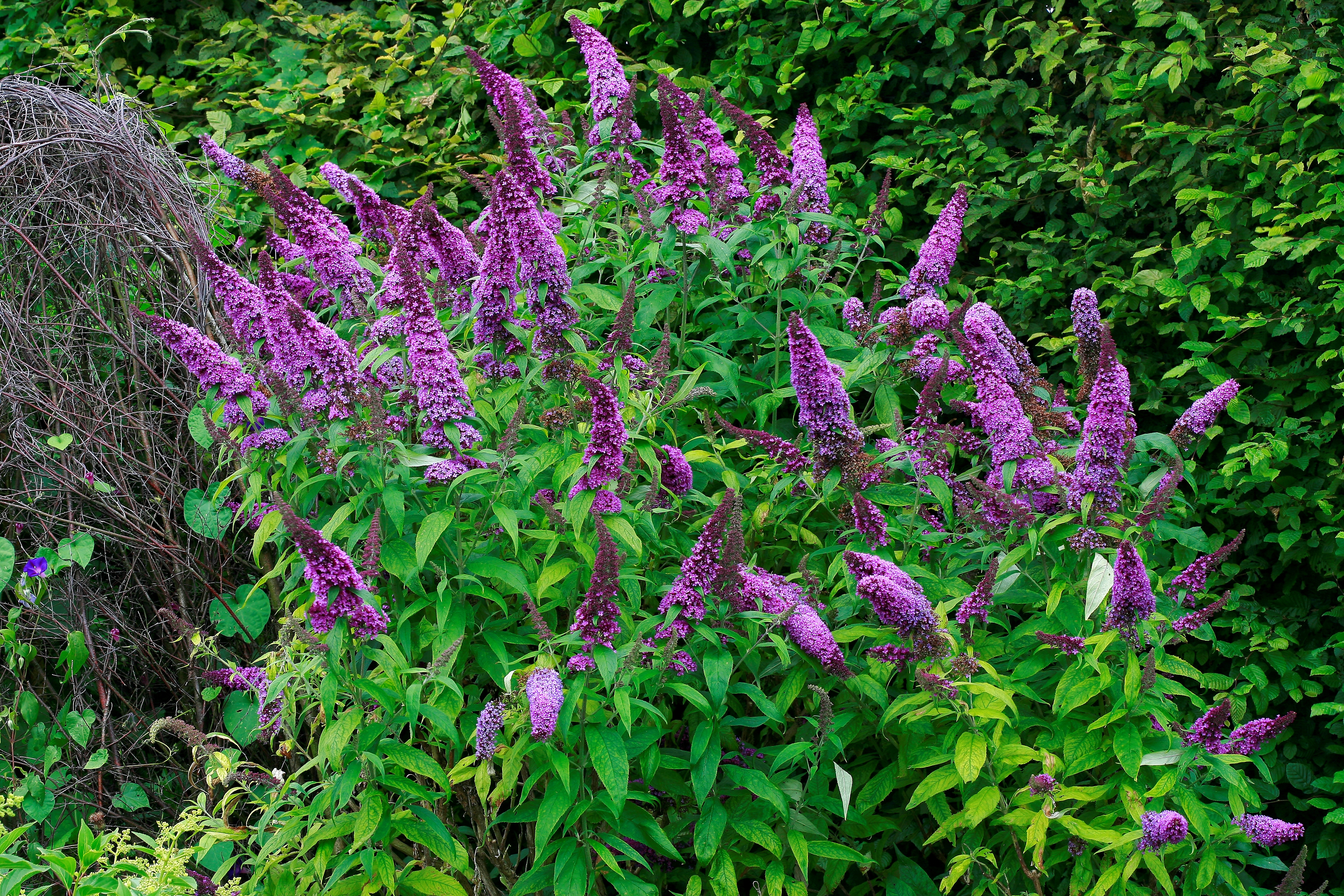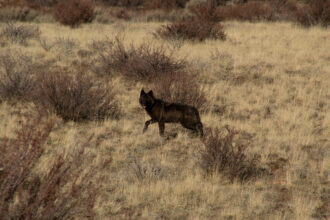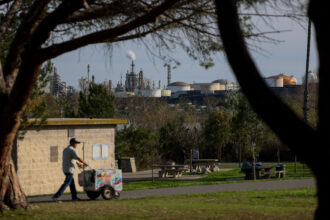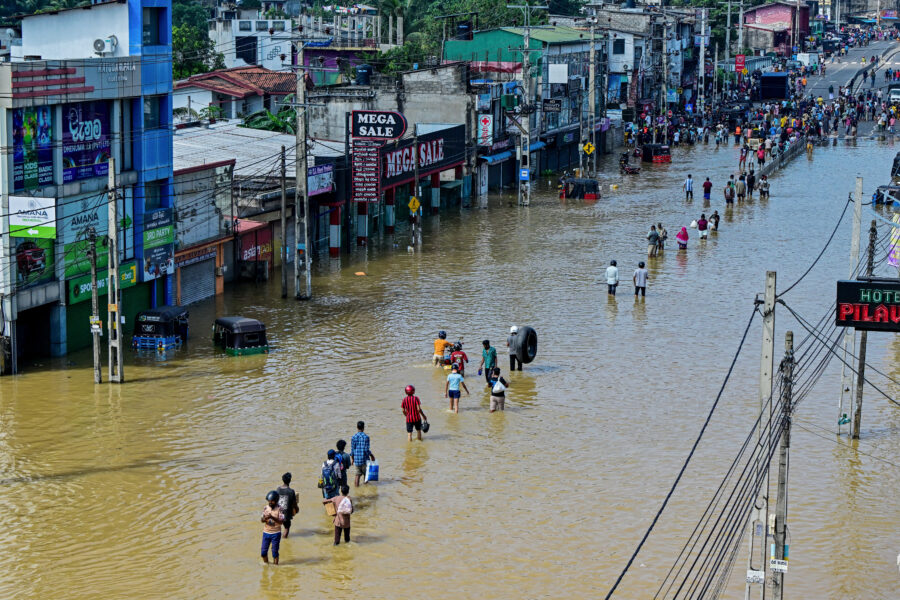Climate change is one of the top threats to vulnerable species around the world, driving widespread losses of plants and animals that can’t adapt fast enough. But at the same time, rising temperatures are in some cases opening the door for certain organisms that can thrive under these changes: invasive species.
From melting sea ice to longer growing seasons, global warming is unlocking new pathways for the spread and proliferation of certain non-native plants, animals, fungi and bacteria, according to a growing body of research. These new arrivals can wreak havoc on ecosystems and agricultural land, sometimes outcompeting native species and costing the global economy more than $400 billion in damages annually—including $21 billion in the United States alone, estimates suggest.
Despite these threats, the Trump administration has poked holes in invasive species research funding and mitigation efforts across the country in recent months. Scientists say this decrease in resources could have major long-term ecological and economic consequences.
Unintended Hitchhikers: The rise of long-haul transportation and trade has made the world more connected than ever before. Unfortunately, the cars, trains, planes and boats that carry us, food and products can also pick up some unintended hitchhikers along the way in the form of seeds, insects, bacteria and even birds and mammals. Whether attaching to the bottom of a boat, stowing away in a cargo plane or even getting stuck on someone’s shoe, these species often incidentally travel from their ecosystem to new places where they can spread.
That’s exactly what happened with the spotted lanternfly, an insect from China that scientists believe made its way to the U.S. on a shipment of stone in 2012. Since then, the lanternflies have spread to at least 15 states across the Eastern U.S., reaching populations of up to 150,000 some years in Pennsylvania alone, The Guardian reports.
While these polka-dotted insects may look harmless, a 2019 study estimated that spotted lanternflies can cause $324 million in damages and cause the loss of 2,800 jobs by killing trees that are crucial for apple and wine production or support birds, bats and reptiles in the region. Similar destruction has followed as other invasive animal species spread across the world, from Burmese pythons in Florida to brown rats in New Zealand.
Many non-native species in the U.S. are plants, said Bethany Bradley, an invasive species expert at the University of Massachusetts Amherst. The term “non-native” is used to describe organisms that do not naturally occur in an area and are introduced by human activities, but they are only classified as “invasive” if the species causes harm to the broader ecosystem, according to the National Park Service.
The reason that many invasive plants outcompete native ones is that they are fast-growing, produce numerous seeds and can better handle shifts in temperature or soil.
Once an invasive species is well-established, “basically, you end up with this introduced plant taking over an ecosystem,” Bradley told me. She co-authored research published in 2023 that found certain common invasive plant species may be able to spread more rapidly under climate change in the Northeastern U.S. Though these states are currently unsuitable for certain invasive plant growth, rising temperatures could change that.
Some invasive plant species may be what’s known as a “sleeper,” which are “right on the edge of its tolerance, and so if it warms up a little bit more, maybe you transition from an established population to one that is actively invading,” Bradley said.
Silver lining: Her research also found that 62 percent of currently abundant invasive species will see a decrease in habitat for large populations in the Eastern U.S. under 3.6 degrees Fahrenheit of warming. That being said, close to a third of global species overall will be at risk of extinction if temperatures rise by even 2.7 degrees Fahrenheit, according to a 2024 study.
Climate-Fueled Invasion: Other climate impacts could also drive the spread of invasive species, such as longer growing seasons or new shipping routes opening up as sea ice melts, according to the U.S. Geological Survey. On the flip side, invasive species can also exacerbate climate impacts.
For example, the deadly wildfire that tore through Lahaina in 2023 was made worse by the highly flammable, fast-growing, nonnative grasses introduced by farmers decades ago. Invasive grasses frequently fuel fires in the Western U.S.—and are typically the first to grow back after the fire, as well.
The most critical and least expensive stage to tackle invasions is when there is a small number of the species in a particular area, according to Sara Kuebbing, a researcher at the Yale School of the Environment.
“You need someone to identify, ‘Oh no, there’s something that we think is about to take off [and] it’s ready to spread’—and that usually happens,” she told me. “What fails is the institutions and the will a lot of times to contain it at that point.”
She pointed back to the spotted lanternfly, which would have required several states to come together at the early detection phase and dedicate the resources necessary to study how best to tackle the invasion and shut it down. This did not happen, as evidenced by the many spotted lanternflies I saw fluttering through the forest on a recent trip to upstate New York.
But governments are working to better collaborate on invasive species issues. In the Midwest, the U.S.-Canadian Great Lakes Fishery Commission has been working with the U.S. Fish and Wildlife Service to control invasive sea lamprey populations in the Great Lakes, which span the Canadian border. A single one of these toothy, eel-like critters can eat 40 pounds of fish a year, so the commission targets the lamprey by spraying pesticide while they are still in the larval stage.
My colleague Anika Jane Beamer reported in February that the program was affected when the Trump administration laid off a large swath of USFWS employees, including several who worked with the commission, and enacted a travel ban and hiring freeze that delayed the remaining staff’s ability to carry out lamprey control measures.
She checked back in earlier today with Greg McClinchey, director of policy and legislative affairs for the Great Lakes Fishery Commission. He said the team raised this issue with supportive members of Congress, got the changes reversed and have had no complications since then, but did lose about five weeks “before we got everything back on track.”
The team is not yet sure if the delay will result in more lamprey later this year.
“What we know for sure is we can’t have what happened in ’25 happen again in ’26,” McClinchey said.
Also in the Midwest, President Donald Trump signed a memorandum in May directing the administration to “expeditiously implement the most effective mechanisms, barriers and other measures” to keep invasive Asian carp out of the Great Lakes, a rare show of support for environmental projects by the administration. However, other invasive species projects have been hit hard by Trump administration actions.
Since 2012, the federally managed Northeast Climate Adaptation Science Center, hosted at the University of Massachusetts Amherst, has worked to increase collaboration on invasive species management in the region. Bradley, who works in the center, helped create a regional network that has become a primary source for mapping invasive plant movement and sharing research on the subject across the region.
She said that states recently asked the center to develop a database of current and emerging invasive plants across the Northeast, but the project largely stalled after the Department of the Interior rejected a proposal for the university to continue hosting the center when it was up for a rebid in February. The Interior Department did not respond when I asked why the administration made this decision and if it will fund the invasive species work through a different mechanism.
Because of lapsed funding, graduate student researchers have been shifted to other projects or are focusing on teaching instead of research. Bradley isn’t sure when she’ll be able to prioritize the project again and is worried that she won’t have the resources to accept students in the future.
“It means that we’re just in this … zombie mode,” Bradley said. “Basically, we’re not dead, but we’re not alive, and it’s been a weird space. We’re still in this long waiting period of hoping that Congress’ support will ultimately be enough to convince the administration that this is a program that does good things.”
More Top Climate News
As climate change accelerates, Thanksgiving dinner staples are increasingly at risk, Simmone Shah reports for Time. For example, farmers are struggling to maintain high yields of cranberries and apples due to drought and changing growing seasons, while turkeys face major threats from extreme heat.
“The impacts of climate change on food production will be increased costs for consumers, without a doubt,” Mario Herrero, professor of food systems and global change at Cornell University, told Time. “The seasonality changes [impact] planting dates. It will make it either more expensive to maintain the yields, or we will need to just accept a lower supply—and lower supply with the increased demand for food that we have leads to higher prices.”
This year the United Kingdom has seen more wildfires than at any other point since recordkeeping began in 2012, Matthew Taylor reports for The Guardian. The Global Wildfire Information System estimates that more than 116,000 acres had burned by November. Experts say the U.K., which is typically too wet for frequent fires, is ill-prepared for these blazes, and the Fire Brigades Union there has called for more investment as the climate changes.
According to documents reviewed by The New York Times, as many as 100 seasonal workers at the National Park Service have not yet received a portion of their back pay after being furloughed during the government shutdown. The law requires that these federal workers be paid “at the earliest date possible after the lapse ends,” and advocacy groups and politicians are saying this pay is overdue. As my colleague Jake Bolster reported, states and nonprofits stepped in to help fill operational gaps at national parks during the shutdown, but some fear that this could help the Trump administration justify further shrinking staffs.
Postcard from … Indonesia

This week’s postcard is courtesy of … me! I recently went on vacation for a few weeks to Indonesia, and spent the last three days of the trip trekking the forests of Sumatra with a guide in search of wild orangutans. Within a few hours of the journey, the skies opened and we were pummeled by rain—and yes, I forgot my pack cover, so almost everything I brought got soaked.
Thankfully, my phone somehow survived so I could snap this photo of a female orangutan effortlessly climbing from branch to branch. It was a magical moment to spend with a creature that is so closely related to us. All the bug bites, dripping clothes, food poisoning and aching muscles were completely worth it.
Today’s Climate readers, please keep sending in your photos for our “Postcards From” feature to [email protected]. We love seeing how you all interact with nature, whether birding in your backyard or hiking on vacation.
About This Story
Perhaps you noticed: This story, like all the news we publish, is free to read. That’s because Inside Climate News is a 501c3 nonprofit organization. We do not charge a subscription fee, lock our news behind a paywall, or clutter our website with ads. We make our news on climate and the environment freely available to you and anyone who wants it.
That’s not all. We also share our news for free with scores of other media organizations around the country. Many of them can’t afford to do environmental journalism of their own. We’ve built bureaus from coast to coast to report local stories, collaborate with local newsrooms and co-publish articles so that this vital work is shared as widely as possible.
Two of us launched ICN in 2007. Six years later we earned a Pulitzer Prize for National Reporting, and now we run the oldest and largest dedicated climate newsroom in the nation. We tell the story in all its complexity. We hold polluters accountable. We expose environmental injustice. We debunk misinformation. We scrutinize solutions and inspire action.
Donations from readers like you fund every aspect of what we do. If you don’t already, will you support our ongoing work, our reporting on the biggest crisis facing our planet, and help us reach even more readers in more places?
Please take a moment to make a tax-deductible donation. Every one of them makes a difference.
Thank you,













